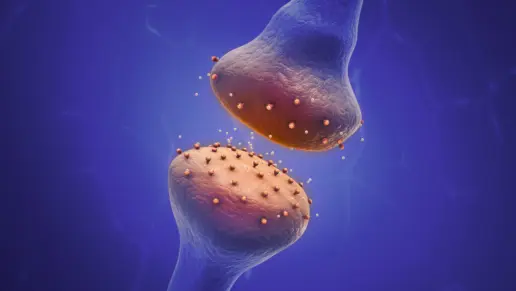Kratom is an herbal substance obtained from the leaves of the Mitragyna speciosa tree that grows in Southeast Asia. Kratom has been used for hundreds of years in Asia to improve energy and relieve pain.
Kratom gained popularity in the United States in the past two decades, being touted as a dietary supplement offering similar effects to opioids and stimulants, but without the risk of addiction. However, recent research is bringing into question the belief that the substance is not addictive. Kratom is currently under investigation by the Drug Enforcement Administration as a “drug of concern.”
Kratom is usually consumed orally, in kratom drinks, capsules, gummies, tablets, powders, and in liquid form. It is sold at gas stations, convenience stores, vape shops, and specialty bars.
If you’re reviewing treatment options or trying to understand whether insurance might help cover addiction care, you can learn more about rehab options and see how many plans support detox and ongoing treatment.
Why Do People Use Kratom?
In 2021, the National Survey on Drug Use and Health reported that about 1.7 million people in the U.S. had used kratom within the previous year. The American Kratom Association (AKA), an advocacy group, suggests that between 10 and 16 million U.S. citizens regularly use kratom.
Most consume it as ground leaves, by brewing the leaves into kratom tea, or by mixing the leaves into other foods. In lower doses, kratom has stimulating and energizing effects. In higher doses, kratom has sedative effects. The consumption of kratom-based products is currently a billion-dollar industry.
Kratom is popular among people who have opioid disorders. It is a pain reliever, and it is said to also reduce drug cravings, reduce anxiety and depression, and reduce symptoms of opioid withdrawal.
Is Kratom an Opioid?
It was recently discovered that kratom, like opioids, does bind with opioid receptors on the brain, a fact that was earlier disputed. However, kratom interacts differently with the brain than opioids do. Kratom can produce opioid-like effects only in higher doses, and it does not have the same level of adverse effects as opioid drugs.
So, kratom is not considered to be a true opioid and is not federally listed as a controlled substance. However, it is currently receiving further study by the DEA. In 2021, the World Health Organization’s Expert Committee on Drug Dependence declined to place kratom on the United Nations list of internationally controlled substances following their investigation, although they too are continuing to evaluate it.
Currently there are no FDA-approved uses of kratom products.
Kratom’s active ingredients are not federally banned in the U.S., but 22 states regulate kratom products in some fashion. In early 2024, Alabama, Rhode Island, Indiana, Arkansas, Wisconsin, and the District of Columbia listed the psychoactive components of kratom as controlled substances in their states. Some local communities also have their own restrictions on kratom products.
Kratom use has resulted in some cases where users experience side effects and behaviors that could be considered addictive. Such symptoms include using kratom more often than intended or using larger amounts than intended, having cravings for the substance, needing to use more of the substance over time to get the same effect, continuing to use it despite having adverse life consequences, and experiencing withdrawal symptoms when use of the substance is ceased.
Kratom is not currently a substance that is tested for on standard drug tests typically used by employers.
But some kratom byproducts can be detected when specialized drug tests are used.
How Does Kratom Work?
Some, but not all, of the components making up kratom’s active ingredient, mitragynine, stimulate opioid receptors in the brain but the effect of kratom on the brain is not as strong as that of true opioids. Nonetheless, this opioid receptor stimulation is the source of kratom’s pain relieving capacity.
It is believed that kratom may also bind to serotonin and dopamine receptors, which would explain the energetic and arousal effects reported by kratom users.
Is Kratom Safe to Use?
The safety of Kratom use is still being debated. This is the reason for the continued evaluation of the substance by the DEA. Because of its capacity to produce opioid-like effects, kratom use has been shown to lead to dependence, especially when consumed in larger doses for self-treatment of pain or for the management of opioid withdrawal symptoms. Regular use over time increases the risk of kratom addiction and potential overdose.
A 2024 Mayo Clinic study found that people who used kratom regularly for more than 6 months were subject to experiencing kratom withdrawal symptoms if they stopped using it. The study also reported harmful substances in kratom capsules and other products, including lead and other heavy metals, as well as salmonella bacteria that causes fever, stomach cramps, diarrhea, and sometimes salmonella poisoning.
35 deaths linked to salmonella-tainted kratom were reported in this study. In addition, from 2014-2019 poison control centers in the U.S. received about 3,400 calls related to kratom use.
Side effects of kratom use include nausea and vomiting, high blood pressure, dizziness, confusion, and trouble breathing. Hallucinations, mental delusions, depression, and tremors are also possible. Long-term use is associated with liver damage. Combining kratom with other drugs increases the danger for severe side effects, and even death.
A 2023 investigative report published in the Tampa Bay Times looked at kratom-related deaths in Florida between 2013 and 2022. In this state alone, 587 people died of kratom-related overdoses during that period.
In 46 of these cases, kratom was the only drug-like substance found in the body. Kratom levels in these cases were found to be present in high amounts. In addition, in nine out of ten kratom-related deaths investigated, another substance that can be harmful if combined with kratom was also found in the bodies.
Why is Kratom Addiction So Controversial?
Kratom currently exists in a gray area scientifically. While it is being evaluated by the DEA and the FDA, there is no federal ban on the substance, although some individual states and local governments have made its use illegal. The few evidence-based studies that have been undertaken to evaluate kratom use are inconclusive.
Studies of potential kratom benefits for managing opioid withdrawal have been deemed to be weak methodologically. No clinical trials to date have evaluated kratom for use in the management of chronic pain and there have been no studies comparing kratom with FDA-approved medications for use in opioid disorder treatment.
Most of the evidence surrounding kratom use comes from anecdotal reports. Many users of the substance claim that it is effective for chronic pain and is a better choice than prescription opiates. Other users claim that kratom helped them quit opioids and have fewer cravings afterward.
Despite these reports, evidence of potential harm related to kratom is compelling. The long-term effects of kratom use are associated with increased severity of side effects and possible death. Addiction-like symptoms are common with long-term, heavy usage. Some former kratom users required medication assisted treatment (MAT) to aid in withdrawal and to deal with continued cravings for the substance.
Signs of Kratom Dependence and Addiction
Kratom users are at risk of both dependence and addiction. Dependence occurs when a user’s body becomes physically reliant on the substance and uncomfortable symptoms occur if the substance is withheld.
Withdrawal from kratom mimics opioid withdrawal, with common symptoms being nausea and vomiting, sweating, irritability, diarrhea or constipation, decreased appetite, insomnia, and dizziness. In cases of heavier use, high blood pressure, seizures, and hallucinations may occur.
Addiction occurs when the user experiences psychological and behavioral changes because of their substance use, such as using the substance more often or using it in larger amounts than intended because more of it is required over time to get the same effect.
Those who continue to compulsively use kratom despite severe adverse effects related to their kratom use, such as a decrease in work performance, conflict in relationships, and financial hardships, may be addicted.
While not approved by the FDA for kratom withdrawal or kratom addiction, MAT drugs, including buprenorphine and a buprenorphine-naloxone combination, have been used successfully. A growing body of published case reports support this treatment strategy. As with other substance use disorders, kratom addiction can often be managed with therapy and counseling, as well.
Where Can I Find Information About Kratom Addiction Treatment?
If you are seeking treatment for kratom addiction, help is available. Many addiction treatment centers now treat this addiction as well as other substance use disorders. The Substance Abuse and Mental Health Services Administration (SAMHSA) offers a free phone helpline to assist people in finding addiction treatment centers in their area.
Call 1-866-902-6268 to ask for a treatment referral. You can also visit the SAMHSA findtreatment.gov website and use SAMHSA’s online treatment locator to find a facility by zip code.
In addition, you can research treatment centers near you, speak to your doctor, or contact local addiction support groups, such as Narcotics Anonymous, to ask for referrals.
What Are the Treatment Options for Addiction to Kratom?
Treatment for kratom addiction can include detox, often with medication-assisted treatment (MAT), inpatient care, outpatient care, and aftercare.
Detox
Detox from kratom typically uses the same treatments used to manage withdrawal from opioids. This may include the long-acting opioid medications methadone and buprenorphine. Other medications may be used to treat specific withdrawal symptoms like nausea, anxiety, or sleep disturbance.
Holistic treatments such as acupuncture, massage, and meditation are often used along with medications to assist in relaxation. 24-hour supervision is often provided during the early stages of withdrawal to assure comfort and safety. Counseling is often begun during detox and continues during follow-up treatment.
Inpatient
Inpatient treatment in a hospital or clinic, or at a residential facility that offers a more home-like atmosphere, provides 24-hour care and supervision. Inpatient treatment is needed when acute or severe addiction symptoms are present and medical assistance is needed to assure safety.
Detox is often included as part of inpatient treatment. When detox is complete, the patient is usually moved to another part of the facility for ongoing treatment.
Outpatient
Outpatient care takes place in a freestanding clinic, a community center, or a practitioner’s office. MAT treatment is offered as both inpatient care and outpatient care. Outpatient treatment includes a wide range of treatment options and intensities to evolve with clients’ changing needs.
Outpatient programs can last for weeks, months, or years. Clients in early recovery may engage in as many as five therapy sessions per week for the short term while those who have stabilized may need as few as one weekly session a period of weeks or months.
In outpatient treatment, group counseling and education sessions are standard, and individual sessions may be available as needed. 12-Step peer support group programming is often included as well.
When MAT treatment is provided as outpatient treatment, clients may need to visit the treatment center or clinic several days per week to receive their medication. Counseling sessions are scheduled separately.
Aftercare
Aftercare is provided following the completion of an inpatient or outpatient program. This often involves alumni meetings, 12-step meetings, and additional individual sessions, if needed. Aftercare groups help clients maintain sober social connections and build ongoing support systems.
Treatment for kratom addiction, like treatment for other addictions, can help you rebuild a healthy, balanced, and successful life.
As you explore different treatment programs and recovery paths, you can also learn more about rehab options to find centers and services that match your needs.
Featured Facilities Near You
Finding facilities near you…





